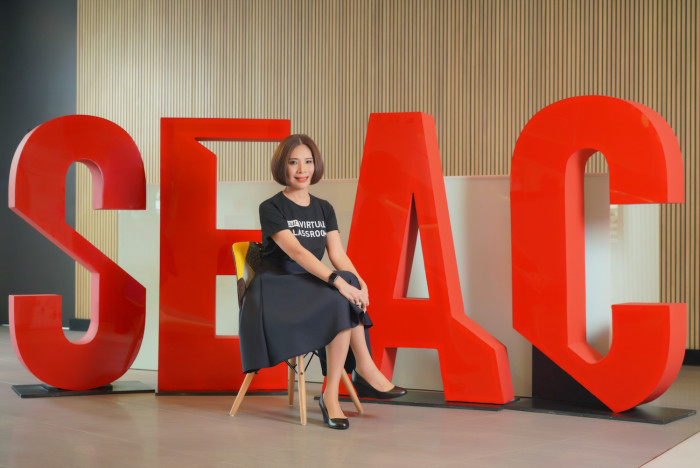Are your people learning or just training?

It starts with real leaders, not all of whom have big job titles, who set the example

Two years ago, I realised I had to upskill my sales force. Conditions were changing, and I needed to help them deepen their capability. Many were seasoned salespeople and were open to joining what turned out to be a rapid but comprehensive sales training programme.
Senior people passed on tips, what was working, what wasn’t, and advice and techniques. Salespeople practised and then went out to their assigned clients. The results improved but not to the extent we wanted.
But why? Because the world was still changing, and we hadn’t prepared the salespeople to learn. We hadn’t set in place a culture of support and reflection. We hadn’t had the salespeople internalise and develop new capabilities or feel comfortable and capable of adapting and trying new things. Training alone had not been enough. Thankfully we learned from this, and that brings us to today.
I think all leaders see that business has never been this complex. I believe only real learning can address the challenges we all face. We know that change is constant, we know it is fast, and we also know it is everywhere. Customer expectations, technology, changes among suppliers, and competitive innovation, not to mention the occasional crisis, are all happening.
We can’t simply train to meet all these; we would have no time to work. We would have to retrain monthly. We can’t also do this on an individual level. Training alone won’t help when all these changes mean that what we do daily is changing.
So, what is the answer? I don’t know, but I believe it starts with our official and unofficial leaders lending a hand.
Organisations need to have or develop leaders who can learn and lead themselves in this situation. These are people who are learning every day — with and from others — and sharing with peers and the people they lead.
I recently read an article that stated leaders are always leading (whether they wish it or realise it). Their people and peers are looking at them for silent and deeper cues. If your leaders aren’t constantly learning and trying new things, you can’t realistically expect innovation from your workforce.
Whether senior leaders or leaders themselves realise it, they are designing your business and cultivating the capabilities of your people effectively (or not). Whether formally or informally, businesses and organisations need learning, not training apparatus in place; otherwise, inertia sets in.
Leaders need to be brave, cast off the past, admit that they don’t know everything, and learn alongside their teams as beginners. This is essential not just for addressing today’s challenges but for tomorrow’s.
Training is still required, and it always will be. You need to have the technical and human capabilities in place. But don’t forget learning needs to take place together and separately.
Let me share how I went about it in my organisation:
Be the change. If you and the most senior people are not visibly learning and sharing new ideas and approaches, you may as well as forget about it. Maybe in the very largest organisations, this is less important. But in most organisations, you and your senior leadership peers set the tone (whether you realise it or not).
In my case, I was taking online courses, sharing ideas and articles, and spending more time with different people in conversations. I was leading the “how might we …” conversations, and I had to be open to new ideas, experiments and approaches — even if my first instinct was to believe they wouldn’t work. I believe this is non-negotiable for leaders.
Dedicate your time to others’ learning. If senior leaders won’t give of themselves, why should anyone else? Yes, we are busier than our people, but this is important. Your people trust you and will learn from you. You can fast-track their capability development by sharing what you are learning. And this is not just for your direct reports and talent. You never know where the breakthrough ideas may come from.
In my case, I enjoyed MD question times via Zoom and in person. My people got to know me and our culture a little better, but more importantly, they got to ask questions. This is not just a chat, and you must let them drive it while you guide it.
Replace outdated training approaches. I’ve commented before that no one has two days to sit in a classroom these days. You do not have to go out and invest a lot in state-of-the-art platforms, outside consultants, or anything else. But you need to ask your learning and development (L&D) people to be creative and create more interesting, and engaging learning experiences. Your people won’t engage if it’s the same old approaches.
You can even source ideas from your people, and your L&D team can support them. If it’s not enjoyable, they won’t come, or they will come but they’ll work on their regular tasks when they should be paying attention. I was fortunate I had designers and am happy to share ideas on how to do this at a low cost and with ease of implementation. Remember that the younger generations came up and learned differently than we did, so this is essential.
As a senior leader you have to help your people, especially your leadership group, learn and change. You must help them see the benefit, not just the responsibility of making time. But they must lead, not hinder learning that is now essential to every organisation.
Arinya Talerngsri is Chief Capability Officer and Managing Director at SEAC — Southeast Asia’s Lifelong Learning Center. She can be reached by email at arinya_t@seasiacenter.com or https://www.linkedin.com/in/arinya-talerngsri-53b81aa.





